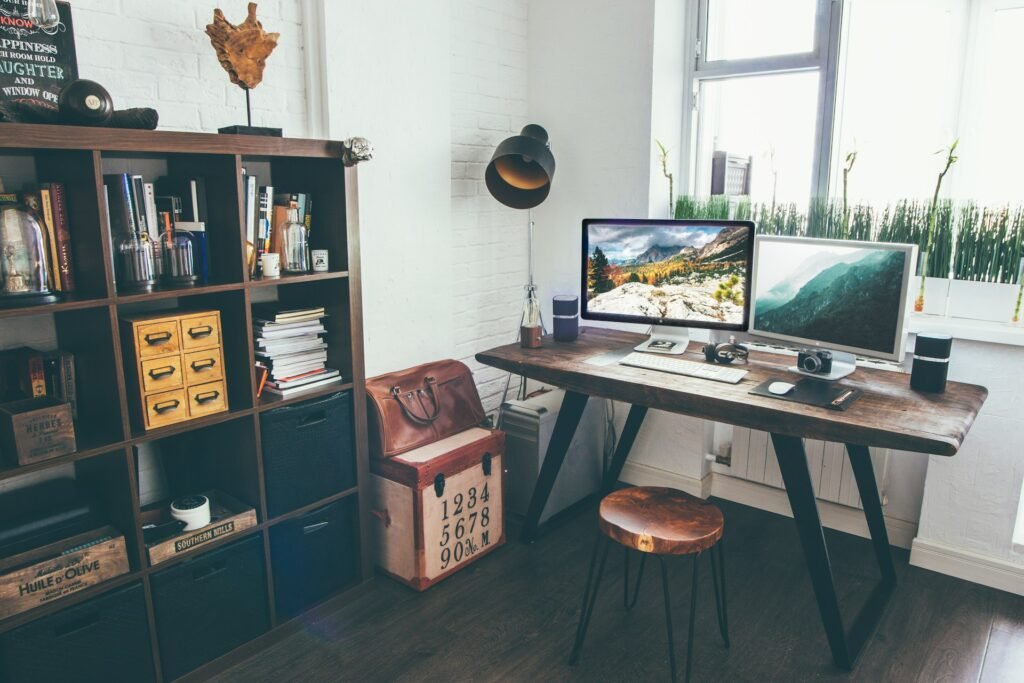In today’s fast-paced world, our workspace can significantly affect our productivity and overall well-being. A cluttered, disorganized desk can lead to distractions, increased stress, and difficulty focusing on the tasks at hand. In contrast, a well-organized workspace can enhance creativity, facilitate workflow, and contribute to a more enjoyable work environment. Whether you’re working from home or in an office, organizing your workspace is essential to maximizing productivity. Here’s a comprehensive guide to help you get started!
1. Declutter Regularly
The first step to a well-organized workspace is decluttering. Take some time to go through your desk and remove items that you no longer need. This could be old papers, pens that no longer work, or gadgets that don’t serve a purpose. Here’s how to effectively declutter:
- Start Small: Focus on one area of your workspace at a time, such as your desk drawer or desktop.
- The Four-Box Method: Label four boxes as “Keep,” “Donate,” “Trash,” and “Relocate.” As you go through your items, sort them into these boxes to simplify decision-making.
- Go Digital: If you have piles of papers, consider digitizing important documents and storing them in the cloud. This not only saves space but also makes it easier to access the information you need.
2. Optimize Your Desk Layout
The arrangement of your desk can impact how efficiently you work. To create an ergonomic workspace that promotes a better workflow, follow these tips:
- Identify Your Workflow: Arrange your desk based on how you use it. Place frequently-used items within arm’s reach and less frequently-used items further away.
- Use Vertical Space: Maximize storage by utilizing vertical space. Wall shelves, pegboards, or organizers can help keep your desk clutter-free while providing easy access to necessary items.
- Declutter Your Desktop: Aim to keep your desk surface as clear as possible—ideally, only displaying your computer, a notepad, and a few essential items.
3. Establish Organization Systems
Creating a structured approach to organizing your workspace can make all the difference. Here are a few strategies to implement organization systems:
- Label Everything: Use labels for file folders, boxes, and drawers to ensure everything has a designated place. This makes it easier to find what you need and keeps your workspace organized over time.
- Create a Filing System: Establish a clear filing system that categorizes documents and records logically. This can save you time searching for important papers later on. You might consider using color-coded folders or a digital filing system with appropriate tags for easy searching.
- Use Organizers and Bins: Invest in drawer organizers, trays, and bins to neatly categorize items like stationery, cables, and files. This can help maintain order and prevent clutter from building up.
4. Personalize Your Space
While organization is key, adding a personal touch to your workspace can also enhance your mood and motivation. Here’s how to personalize your space without compromising efficiency:
- Incorporate Plants: Adding greenery can improve air quality and create a calming environment. Choose low-maintenance plants, such as succulents or snake plants, that thrive in office settings.
- Display Inspirational Items: Hang up quotes, artwork, or photographs that inspire you. This can create a positive and motivating atmosphere as you work.
- Create a Comfortable Environment: Invest in ergonomic furniture, cushions, or items that make your workspace comfortable. Items like a nice chair, a desk mat, or proper monitors can help reduce strain.
5. Schedule Regular Maintenance
Maintaining an organized workspace is an ongoing process, not a one-time task. Schedule regular check-ins to ensure that your workspace stays organized:
- Weekly Clean-Up: Dedicate a few minutes each week to tidy up your desk, discard unnecessary items, and reassess your organizational systems.
- Monthly Review: Once a month, take stock of your workspace. Assess whether your current organization strategies are effective or if they need adjustments.

Conclusion
A well-organized workspace not only promotes productivity and efficiency but also fosters a positive work environment. By decluttering, optimizing your desk layout, establishing organization systems, personalizing your space, and scheduling regular maintenance, you can create a workspace that inspires you and supports your goals. Remember, the key to a functional workspace is finding a system that works for you and adapting it as your needs change. Start your organizational journey today and experience the difference it can make in your daily work life!












